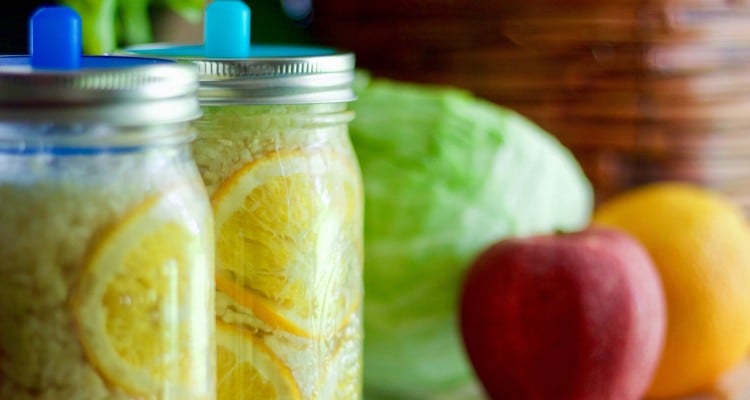
Prioritizing kids' nutrition can be challenging at any time of year. With so many quick, easy, and unhealthy options available, busy schedules can make it difficult to prioritize healthy foods.
Between travel, summer camps, and the constant cry for ice cream, summer can present even more challenges. But this season also offers a slew of fresh produce, along with ways to stay healthy and active as a family.
common challenges of prioritizing healthy foods in the summer
Some challenges are present year-round, like responding to picky eaters or a packed schedule. Summer often brings travel, routine changes, barbecues, parties, and–for some–less control over what your children eat.
Over the summer, your main goal should be providing your children with a foundation of healthy nutrition at home, which leaves some leeway for unexpected and inevitable treats that come with summer activities. Unless your child has an intolerance or allergy to a particular food (like gluten or dairy), many parents find that loosening the reins a bit can be helpful. If your kids are offered a varied diet of vegetables, fruits, protein, and healthy fats at home, it is okay for them to splurge a little. Still, prioritizing a healthy, balanced diet is key to your kids’ overall health and wellbeing.

6 ways to make healthy nutrition a priority in the summer
The following six tips can help you prioritize nutrition over the summer and take advantage of all this season has to offer.
Eat locally and seasonally
One significant benefit of summer is that fruits and vegetables are plentiful in most parts of the country. Antioxidant-rich berries, green leafy vegetables, and a myriad other nutrient-dense produce are available at the local level, which means more nutrition for you and your kids. Throughout the year, these same food items tend to be shipped and picked out of their peak of ripeness, arriving at your door with a lower nutrient profile.
Venture out for berry or apple picking with your kids or engage in other local activities that encourage learning about and appreciating locally grown foods.
enjoy the sunshine
Vitamin D from the sun is best metabolized during certain hours, usually between 10 am and 2 pm. Try to expose yourself and your children to some sun during these hours–but always wear sunscreen. The key is to avoid burning while still allowing yourself enough exposure to soak in some vitamin D. If you live in a northern region (like most people living in the US), it's challenging to obtain enough vitamin D from sunshine alone. Most doctors and pediatricians in these areas recommend vitamin D supplementation all year round, including during the summer.
Look for a sunscreen with at least SPF 15, and choose products that use titanium or zinc dioxide rather than potentially harmful ingredients like oxybenzone, which has been associated with inflammatory reactions in children.[1]
get creative with cooking
With so much produce available, you can get creative with kid-friendly ways to cook. For example, throw some pineapple or other fruits on the grill. Grilling and cooking meats at high temperatures have been linked with cancer-causing chemicals such as heterocyclic amines (HCAs) and polycyclic aromatic hydrocarbons (PAHs), and including nutrient-dense fruits and vegetables helps to create a more balanced meal.
involve kids in summer meal prep
When kids get involved with shopping, meal prep, and cooking, they are more motivated to eat what they’ve helped prepare. Take a family trip to a local summer farmers market, and plan a healthy meal to cook together.
plant a garden together
Planting a garden with your children is a fantastic way to teach them about food origins and beneficial components. If you don’t have ample outdoor space or much time to dedicate to gardening, start with culinary and health-supporting herbs like cilantro, thyme, oregano, mint, and lemon balm. These herbs all have nourishing properties and are easy to grow.
allow treats in moderation
Trying to completely limit summertime treats might backfire. Allowing some sweets in moderation and focusing on healthier options at home is a holistic strategy that usually works for the whole family. Consider making your own sweets, like this one-ingredient banana ice cream. Add a spoonful of nut butter for healthy fats and cinnamon for natural sweetness and blood sugar support.
takeaway
Summer offers endless opportunities for fun and family bonding but can also present some nutritional challenges if you’re not careful. If your children participate in summer camps or other activities, you might not have control over part of their daily diet. If that’s the case, providing nutritious meals at home is critical, along with trying some simple strategies to prioritize kids' nutrition and get them involved with and excited about healthy eating.

[1] Suh S, Pham C, Smith J, Mesinkovska NA. The banned sunscreen ingredients and their impact on human health: a systematic review. Int J Dermatol. 2020 Sep;59(9):1033-1042. doi: 10.1111/ijd.14824. Epub 2020 Feb 28. PMID: 32108942; PMCID: PMC7648445.


















